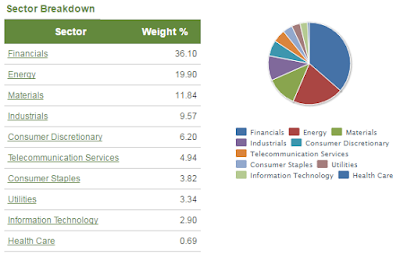When setting my simplified investment goal for 2017, I knew it would be a stretch to attain. Adding $2,600 of incremental forward dividend income in a frothy bull market, while simultaneously achieving a dollar-weighted average organic dividend growth rate of at least 5% proved to be extremely challenging. It took me 355 days, but I’m happy to report that my latest purchase of Digital Realty Trust pushed me over my benchmark of forward dividend income and my dollar-weighted average organic dividend growth rate ended up at 6.95%.
Admittedly, there’s a great deal of relief and pride in achieving such a lofty goal. Although I don’t blog very often anymore, I know that having posted my goal helped keep me accountable throughout the year. For that reason, I’m going to bite the bullet and float my 2018 goal:
Increase forward dividend income by $3000 while achieving a dollar-weighted average organic dividend growth rate of at least 5%.
By setting my forward dividend income goal even higher, I’m hoping to motivate myself to keep my foot on the gas and my eye on the prize. As tempting as it is to stray from my strategy of investing in dividend growth stocks, the reality is that my passive income has kept growing at a rapid clip due to my persistence.
Part of my reason for posting less frequently has been in an effort to avoid entries that add no value to readers. In that vein, I thought sharing my top three investment lessons and mistakes from 2017 might make this entry more worthwhile.
Lesson 1 - Stick with the Plan
In a year where FAANG, Bitcoin and marijuana stocks soared, it was very tempting to jump on those trends. Instead, I stuck with my plan to focus on dividend growth stocks that help built my passive income. Although my strategy is not at all sexy, my results are strong and allow me to sleep well at night.
Lesson 2 - Think Lots, Trade Little
With only 20 trades during 2017 (18 buys, 2 sells), I set a personal low for transactions. Beyond the excellent excuse for not trading of having an infant daughter at home during the last 5 months, my other tactic to avoid churn is to wait at least a week after I think about conducting a transaction. Although I'll never buy at the bottom or maximally profit from a one-day dip, my transaction costs are minimal (less than 10 basis points during 2017).
Lesson 3 - Read, Listen and Absorb
As comfortable as I am with dividend growth investing, I find myself attracted to books, articles and blogs that explore other styles (deep value, contrarian, short selling, evidence based investing, GARP, etc.). I'm also a recent convert to podcasts such as Invest Like the Best, Capital Allocators, Animal Spirits and other more niche offerings. I'm thoroughly convinced that by absorbing these materials, I can learn from the successes and failures of others.
Mistake 1 - Letting Performance Metrics Drive Behaviour
My focus on increasing forward dividend income while keeping my dollar-weighted organic dividend growth rate over 5% drove many of my investing decisions in 2017. For most of December, I felt compelled to make one last buy in order to achieve my forward dividend income goal. Similarly, I have passed over a couple of interesting situations such as Home Capital and Cineplex, knowing that they would negatively impact my dividend growth goal.
Mistake 2 - Adding Positions I Don't Have Time to Properly Monitor
I moved from 33 positions at the end of 2016 to 38 current positions by adding six during 2017 and exiting one (Corus Entertainment). To justify the high number of positions to myself, I consider all seven Canadian banks to be similar holdings, both Enbridge companies are commonly controlled, Aecon should disappear from my portfolio early in 2018 assuming the Federal Government approves their purchase, and I'm two years into my five year plan of giving away my RioCan shares to charity. Having said all that, there's definitely opportunities to narrow the number of companies I own to make monitoring easier. I have to be more content and comfortable with what I own, and not look elsewhere when considering investments.
Mistake 3 - Committing Numerous Behavioural Investing Errors
This could easily be a blog entry on its own, but just in the past month, I've irrationally anchored on low stock prices that I did not take advantage of, fallen for the sunk cost fallacy by feeling the need to get the most out of my $30 US dollar friendly fee from my brokerage, avoided taking a capital loss on Alaris which I could definitely use in future years, and wasted loads of time trying to justify investments (particularly in Amazon and marijuana stocks) instead of sticking with my strategy. Every time I read anything about behavourial investing, I realize how often I make simple behavioural investing mistakes at every turn.
Although I plan to share my Q2 2018 dividend growth watch list before year end, on the chance that I don't get around to it, I wanted to wish everyone the happiest of holidays and a prosperous 2018! Thank you for stopping by, reading my thoughts, commenting and providing feedback.


